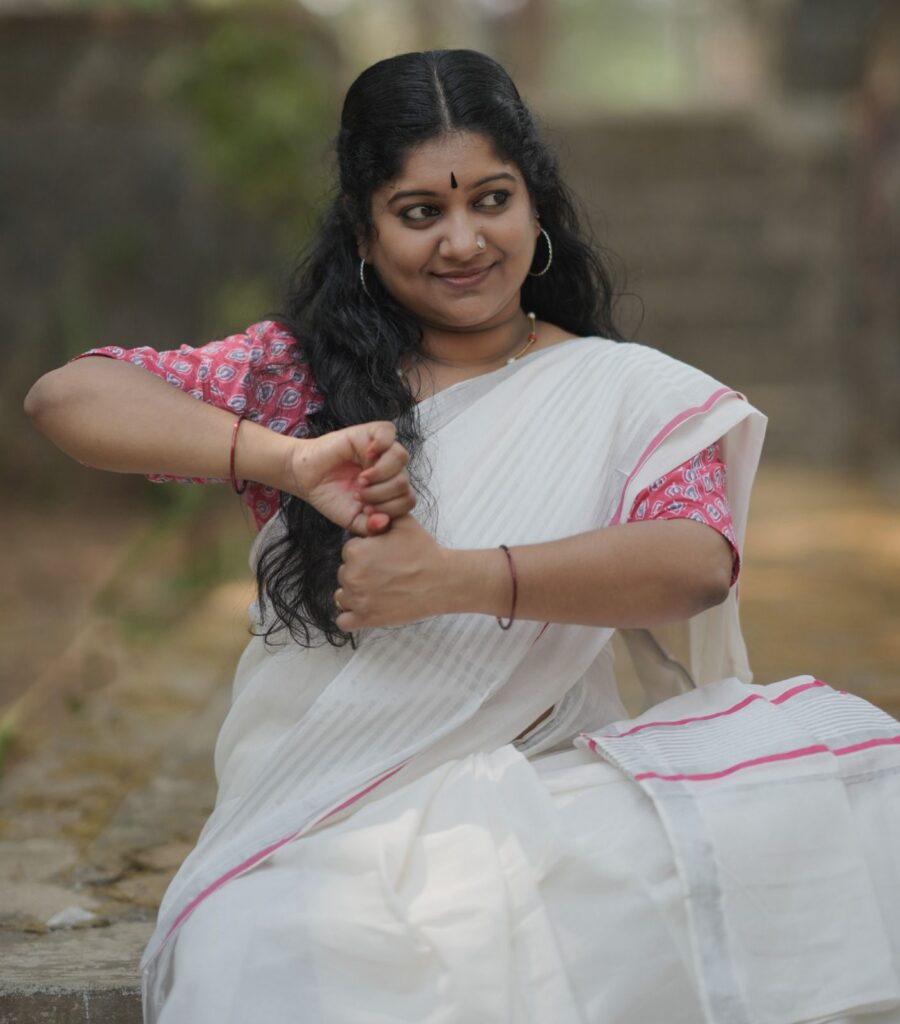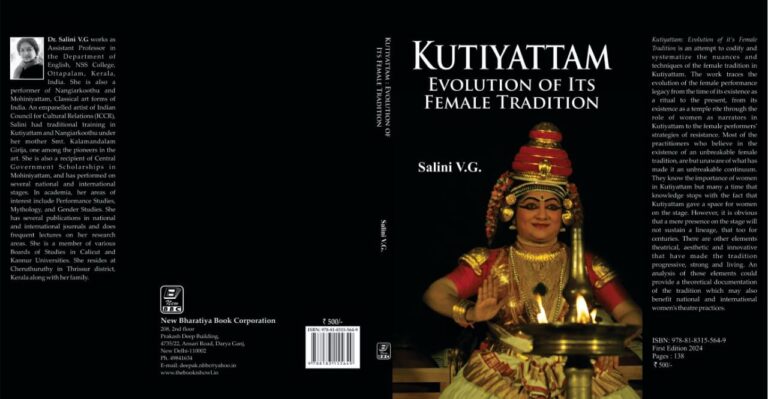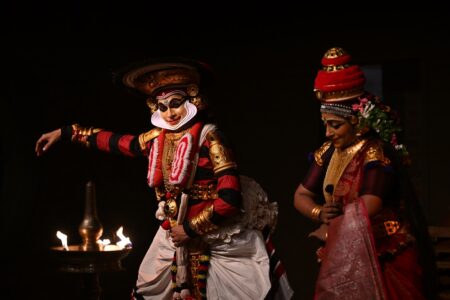Dr V G Salini’s Kutiyattam – Evolution of Its Female Tradition is a meticulously researched work that not only traces the role of women in this ancient theatre form but also examines the shifting aesthetics and narratives shaped by female performers.
Kutiyattam – Evolution of Its Female Tradition, the book authored by Dr V G Salini is perhaps the most recent one on this art form. Further, it is the second one from a practitioner, the first being Usha Nangiar’s ‘Abhinetri’.
It is commendable to note that in her attempt to trace the evolution of the female tradition, the book provides a historical survey of the evolution of the theatre form too, on an elaborate scale. In this respect it is didactic to a lay connoisseur of the art as well.
Tracing the roots
Divided into five chapters, she opens with Introduction (Chap.1) in which evolution of Kutiyattam is explained, the thrust being on the female tradition beginning from Bharath’a Natyasastra. Women’s presence in theatre is evident from the references in Natyasastra and other literary works.
“Yet for the feminist critics, something that strikes their eyes is the set of codes of patriarchy that has omitted, silenced and stereotyped women in Kutiyattam”, she points out. This is amply substantiated through several factors like aharya, language and omission of characters like Vijaya in Toranayudham and Tara Balivadham for instance. As for the aharya, she points out how the female characters are portrayed as meek and fragile characters thanks to their attire of minukku and are looked upon as mere sensual beauties. This is in sharp contrast to the vibrant characters with varied veshams portrayed by males.

In the second chapter, the focus is on the Nangiar as a ritualist. Several stories regarding their origin are explained by quoting different authors in this attempt. Salini argues that Nangiarkoothu, the solo female performance has its origin from Chudalakuthu. Dr Aparna Nangiar, who had the privilege of performing the same in the recent history, has mentioned that this performance embraced the entire structure of Kutiyattam as found in a manuscript she could procure.
Discussion of the grooming of a novice to the status of a Nangiar is vivid. Various feats like purappad, nithykriya, marayilkriya, singing of invocatory verses like akkitta, singing slokas for nirvahanam, beating of kuzhithalam, find detailed description. Salini explains, “Nangiar’s ritual performance was not merely a religious ritual. Underneath the aura of a religious sacrifice was the ore of a highly aesthetic performance tradition”.
Breaking barriers
Female characters as narrators are dealt with in chapter three. Once again the very structure of the theatre form is explained which appears as repetitive. Also one reads about the immortal services of the veteran Painkulam Rama Chakyar who was bold enough to lead the Kutiyattam department in Kerala Kalamandalam thereby providing it a secular aura. In this connection Kalamandalam Girija’s role as the first non-Nangiar to practice Kutiyattam is explained.
Salini’s address of the narrative role of the female characters appears only half way through this chapter. According to her, the female becomes “an internal narrator as the acting narrator or character narrator and the external narrator as the reciting narrator”, based on their performance on the Kutiyattam stage. She establishes this point with myriad examples culled from different plays.
Such a tradition of narrators provided new aesthetics to Kutiyattam. Though nirvahanam is common to both male and female actors, that the female characters are enacted by female performers themselves and that the female characters have the same narrative space and style is especially noteworthy. Moreover the presence of the reciting performer on the stage who guides and controls the performance enhances the importance of female performers in Kutiyattam. Thus the narrative structure gives a space where female voice is equally important.
The modern resurgence
In chapter four captioned “The Resisters: Subversive Performances of Contemporary Female Practitioners of Kutiyattam”, Salini dwells on the improvisations brought about by the present performers that are highly relevant. It could be explained as a reaction to the patriarchic dominance over the past and also a product of their prolonged experience of repeating the same characters and acts.
Admittedly, they wanted to assert themselves and establish their own independent identity. Improvisations of the Poothana in Pooathanamoksham and Parvathy in Parvathiviraham by Kapila Venu and, how Lalita who is Shurpanaka in disguise, is perceived by Usha Nangiar etc ascribe a feminine sensibility to these characters. Another way of resistance is by bringing back those female characters that had faded into oblivion.
Improvisations apart, Girija had gone further by choosing Sanskrit plays so far alien to Kutiyattam repertoire. Her important work is Venisamharam from which she choreographed the first and sixth acts completely and also an episode from the second act. Girija’s works find exhaustive description here.
Creation of new narratives has been another way of resistance. Sreeramacharitam Nangiarkoothu by Margi Sati and Abhinetri by Usha Nangiar find mention here. Salini has also mentioned the financial constraints for such creations on the part of the artistes.
The appendix of the book provides interviews of the authour with Sarojini Nangiaramma, Kalamandalam Girija, Usha Nangiar, Kapila Venu and Dr Aparna Nangiar. This part is very informative.
Small wonder that Salini has done justice to the topic in all respects, since she could watch the theatre form from close quarters from very early age, being the daughter of Kalamandalam Girija. Moreover she was trained by her mother. Her quotes from western authours could be attributed to her academic background – she is presently an Assistant professor of English in NSS College, Ottappalam.
The book has an attractive look with her impressive picture on the cover, that too in the female costume. The credit for this goes to Hari Menon. Subtitles would have enhanced the readability of each chapter, extremely long and overloaded with a plethora of information. Absence of pictures makes the pages dry. The book, she says, is a part of her thesis. But when produced as a book, it could have undergone the scrutiny by an editor.
Though much has been discussed on Nangiarkoothu, she is silent about its revival by Ammannur Madhava Chakyar whose title is wrongly given as Padmashree as against Padmabhushan. May be an oversight.
Publisher: New Bharatiya Book Corporation, Delhi
Year: 2024
Price: Rs. 500/-




